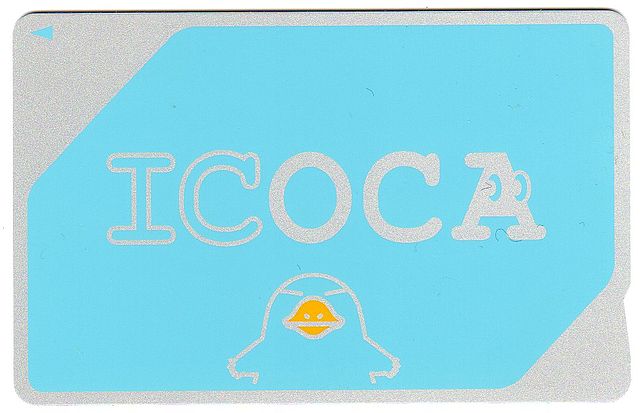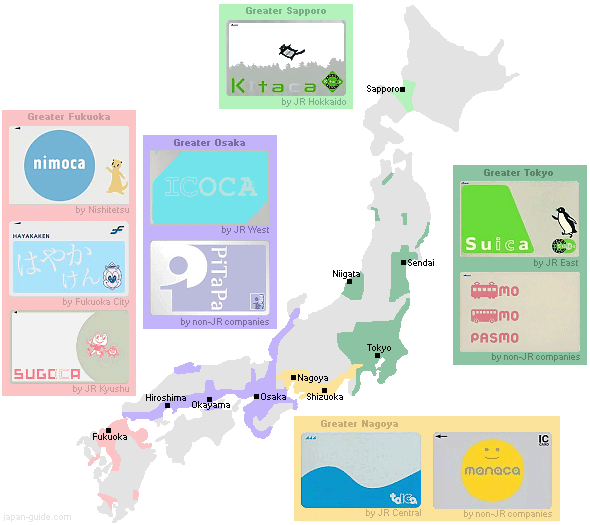What are IC Cards?
IC Card stands for integrated circuit card, although I don’t think that’s anyone’s first thought when they hear IC Card in Japan. Instead, IC Cards treated as reloadable transit cards that can also be used as a debit card at certain locations.
These locations typically include those belonging to larger chain businesses such as kombinis, vending machines, coin lockers, Bic Camera, Uniqlo, and more. Throughout your trip, an IC Card will likely be your most common form of payment.
You can grab yourself an IC Card once you land in Japan at either Narita Airport or Haneda Airport. There will be IC card machines where you can purchase a new IC card or reload your card if you already have one.
These machines are also available at each of the train stations in Japan as well, however different regions of Japan may have their own IC Card that looks different from the ones commonly found in Tokyo.
Types of IC Cards

In Tokyo, you will find that most people use the Suica and Pasmo IC Cards. Although they’re different cards that are dispensed by different companies, they are completely interchangeable in terms of use.
One thing to note however, is that currently as of this post, Suica and Pasmo cards are no longer available for purchase due to a semi-conductor chip shortage, so you’ll have to look into getting either the Pasmo Passport or Welcome Suica cards instead.
These cards differ from the regular Pasmo and Suica cards as they expire after 28 days. After that, it just becomes a souvenir. Although, if you travel out far enough to somewhere like Osaka or Kyoto, you’ll find that they still have regular IC cards for sale.

In the Kansai region where Osaka and Kyoto belong to, you can find the elusive Icoca IC Card whose mascot is a platypus! Consider that a reward for yourself if you travel out this far. The bonus perk of having a permanent IC card is that you’ll look 1% less touristy (based on unverified anecdotal evidence).
As mentioned earlier, while IC Cards might vary in appearance, they all still function the same in the end. You can use any acceptable IC Card for both transit and store payments. Just keep in mind that not all IC Cards are nationally acceptable.

The cards in the picture above are all 10 of the nationally accepted IC Cards. If you purchase an IC Card that isn’t shown above, then chances are you’ve purchased a local IC Card, which is generally only usable in the local transit systems. This also means it may not be usable as a store payment method either.
Card Usage
So as I said before, you’ll generally be using your IC Card to pay your transit fares and pay for some store purchases. It’s super convenient to only need to rely on one card as you go about your day to day in Japan.
Tap your IC Card to board the train, tap it again to hop off, tap it to buy a bottle of Oi Ocha at the vending machine, and tap it once more to buy a delectable Tuna Mayo onigiri at the konbini!
Once you’ve tapped to your heart’s content, you can reload your IC Card with cash at an IC Card charge station. These charge stations can be found at just about any train station.
And if you find that you don’t have enough funds on your IC Card to tap out of a ticket gate, there will always be a fare adjustment machine nearby that will allow you to reload your card.
As you travel around Japan, your IC Card will act as your loyal and dedicated travel partner. Make sure to cherish them well and don’t lose them!

Leave a Reply